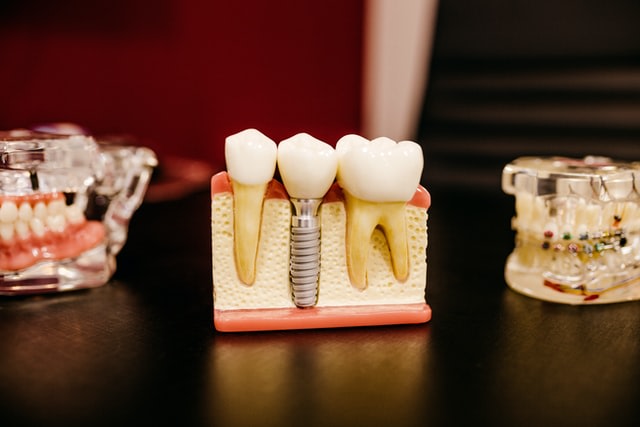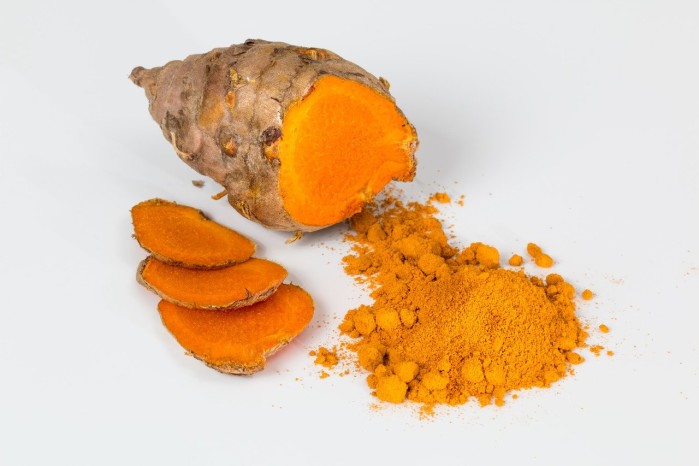What are gingival pockets?
Healthy gums connect to the necks of the teeth. We talk of gingival pockets as soon as the gums become inflamed and are receding by at least 2 millimetres. If these gingival pockets are not treated, they will deepen, and periodontitis can develop. The reason for this it the bacteria that accumulate on the surfaces of the teeth, in the interdental spaces and on the gums. If these are not removed, inflammation develops, which is often purulent. The gums recede, and gingival pockets form.
Symptoms of inflamed gingival pockets
The most common symptom of gingival pockets is reddened and swollen gums. Teeth react sensitively to cold and warm drinks, food and desserts. Teeth and gums are very sensitive when you brush your teeth, and they can hurt and even bleed. Those affected complain of strong and putrid bad breath, even if they have good oral hygiene.
Other symptoms can include loose teeth or thick tartar. Chubby cheeks or a fever also indicate an infection. If there is inflammation, fistulas can develop, causing pus to form on the gums. The pulsation due to the inflammation can also lead to a headache.
Swollen lymph nodes can be a sign of inflammation. The dentist can determine whether gingival pockets have formed and how far they have progressed.
Gingival pockets due to wisdom teeth
If wisdom teeth do not fully erupt, it is common for the gingival pockets to become inflamed. The reason for this is that food scraps accumulate in the gingival pockets, and bacteria form as a result. The resulting inflammation attacks both the wisdom tooth and the surrounding gums.
To relieve the pain, you can cool the affected area or use a desensitising cream. The inflammation will only heal, though, when the tooth is pulled and the gingival pocket is treated.
Gingival pockets with dentures
If inflammation develops deep down in the crown, bridge or implant, gingival pockets will develop. To prevent the dentures from losing a firm hold and falling out, you should visit a dentist immediately.

Other causes of gingival pockets
The most common cause of gingival pockets is advanced periodontal disease. The inflammation attacks the gums, tissue and bones, so that the teeth no longer have a firm hold.
What exactly is periodontitis?Failure to use dental floss properly and applying too much pressure can damage the interdental spaces. The open areas are more prone to inflammation and thus also to the formation of gingival pockets.
Brushing teeth is also something that needs to be learned. Excessive pressure can irritate the gums and cause minor injuries to the gum line. This can lead to inflammation and, eventually, receding gums.
How to brush your teethAnyone who grinds their teeth not only stresses the surfaces of the teeth and the tooth enamel, but also the gums. The irritated gums can recede.
MORE ON TEETH GRINDINGHormonal changes, such as during puberty or pregnancy, can be the cause of gingival pockets, among other things. The gums become sensitised and are more prone to inflammation.
Teeth during pregnancyAvoid gingival pockets through proper oral hygiene and checkups
In order to prevent gingival pockets from forming, you should practice thorough oral hygiene.
This means brushing your teeth twice a day with a fluoride-containing toothpaste and cleaning the interdental spaces with dental floss or interdental brushes.
Since a lot of bacteria are deposited on the tongue, you should remove the plaque with the help of a tongue scraper or tongue brush. You can then rinse your mouth with a mouth rinse containing chlorhexidine.
In addition, you should attend regular checkups at the dentist and have your teeth cleaned professionally once or twice a year.
Measuring the depth of the gingival pockets
In order to be able to determine whether and how your gums should be treated, the dentist will undertake to measure the gingival pockets. A periodontal probe will be inserted into the gum. If it reaches up to two millimetres deep, no treatment is necessary. If the probe sinks deeper, however, the gingival pockets should be treated.
Filling the gum pockets
The gingival pockets are often filled with the help of a graft, so that the sensitive tooth necks are no longer exposed. Endogenous tissue is used, which quickly fuses with the receded gums.
Depending on the amount of effort required and the treatment technique used, the costs range from between £60 and £150 per dental region.
The costs are usually borne, or at least subsidised by, the statutory health insurance providers.
Treatment of gingival pockets
When treating gingival pockets, the surfaces of the teeth and the interdental spaces are cleaned and bacteria are removed. In the case of advanced gum recession, for example in the case of periodontal disease, an operation is performed under local anaesthesia. The gums are gently detached from the tooth so that plaque, bacteria and the attacked tissue can be removed from the gingival pockets.
After the treatment, antibacterial, disinfecting preparations based on chlorhexidine are used. The costs for the treatment vary depending on the severity, ranging from around £150 to £600. The statutory health insurance providers will subsidise the costs of treatment.
After the treatment, you should have regular checkups and thoroughly clean your teeth, interdental spaces and gums. Combining treatment and thorough oral hygiene will eliminate symptoms such as bad breath.
Laser treatment
With laser treatment, the gums are not cut open. The gingival pockets and the surfaces of the tooth roots are thoroughly cleaned, and inflammatory tissue is removed.
After treatment, you should practice good oral and dental hygiene and have regular follow-up examinations.
In addition, you are advised to have a quarterly prophylaxis session with professional teeth cleaning.
The costs of the laser treatment are individual and depend on the number of gingival pockets to be treated and how pronounced they are. As a rule, the cost per tooth is around £20. The costs of this treatment are not covered by the statutory health insurance providers.
Treating gingival pockets with medication
If the gum recession is not yet strongly pronounced, a periodontal cream or a gum care gel can be used. This strengthens the gums and has an antibacterial effect.
You can also take advantage of Chlorhexamed, which is found in mouthwashes and gels, among other things. It fights bacterial inflammation and is intended to be used in the oral cavity after periodontal surgery.
If inflammation occurs repeatedly in the gingival pockets, the doctor can usually inject antibiotics into the pockets or prescribe antibiotics in tablet form.
Alternative treatments
You can treat receding gums naturally and relieve pain with the following homeopathic remedies and home remedies:
Aloe vera: antibacterial effect, reduces the depth of the gingival pockets
Clove oil: relieves pain
Tea tree oil: antiseptic, anti-inflammatory
Turmeric, sage, thyme, green tea, chamomile preparations: anti-inflammatory
Salt solutions, burdock root: stops bacterial growth
Coconut oil: nourishes the oral mucosa
Vitamin C: strengthens the gums
Vitamin D: strengthens the immune system
Bach flower preparations (globules, cream, gel, spray, lozenges): promote healing

Cleaning gingival pockets at home
You should clean your teeth, gums and gingival pockets every day.
Dental floss and interdental toothbrushes are suitable for this. They adapt to the gingival pockets during cleaning and clean them effectively.
With interdental toothbrushes, you should make sure that you use several brushes of different sizes in order to clean each gingival pocket individually.
We do not recommend using dental floss sticks, as they are less effective in getting around the root areas and the risk of injury to the gums is much higher.
Another way to thoroughly clean both the interdental spaces and the gingival pockets is to use oral irrigators.
